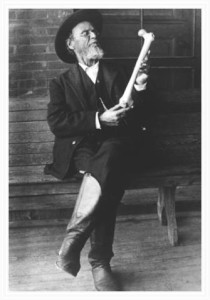Osteopathy is a medical science that was first developed in the late 1800’s by Dr. Andrew Taylor Still. Dr. Still’s beliefs strayed from the medical practices of that time, and from allopathic (MD) physicians, in that he felt the role of the physician was to find the Health in their patients, not to simply identify diseases and treat symptoms.
He went on to outline four basic principles of Osteopathy:
- Structure and function are intimately related. “ The human body is a living machine that will run right so long as the anatomy or structural part of it is perfect.” In Osteopathic Medicine, the musculoskeletal system is of great importance due to it’s relationship to the body’s other vital organs, and to the whole. Thus, manual therapy (manipulation) plays an important role to maintain normal motion, balance, and therefore function.
- The human body is always seeking to move toward Homeostasis. In other words, the body has self healing capabilities. The role of the Osteopath is to remove impediments to this healing process…be they structural, or otherwise.
- Man is triune. This was Dr. Still’s way of saying that man (or woman) is made up of Body, Mind, and Spirit…and that all of these facets should be considered in one’s overall health.
- Osteopathic Manipulation, and the laying on of hands allows for better structure, therefore improved function and better health.
 These basic principles are an important part of my practice. As Dr. Still said,
These basic principles are an important part of my practice. As Dr. Still said,
Osteopathy is to me a very sacred science. It is sacred because it is a healing power through all of nature.
In regard to the type of Osteopathic manipulation you might receive here, there are number of different modalities that I utilize. The specific type of treatment(s) used is based on the patient’s age, problem, and body type. The art of manual therapy is figuring out what will work best for you.
I use direct action (HVLA or “thrust”) mobilization, strain – counterstrain, soft tissue, myofascial release, crania- sacral Osteopathy, and Biodynamics in my practice.